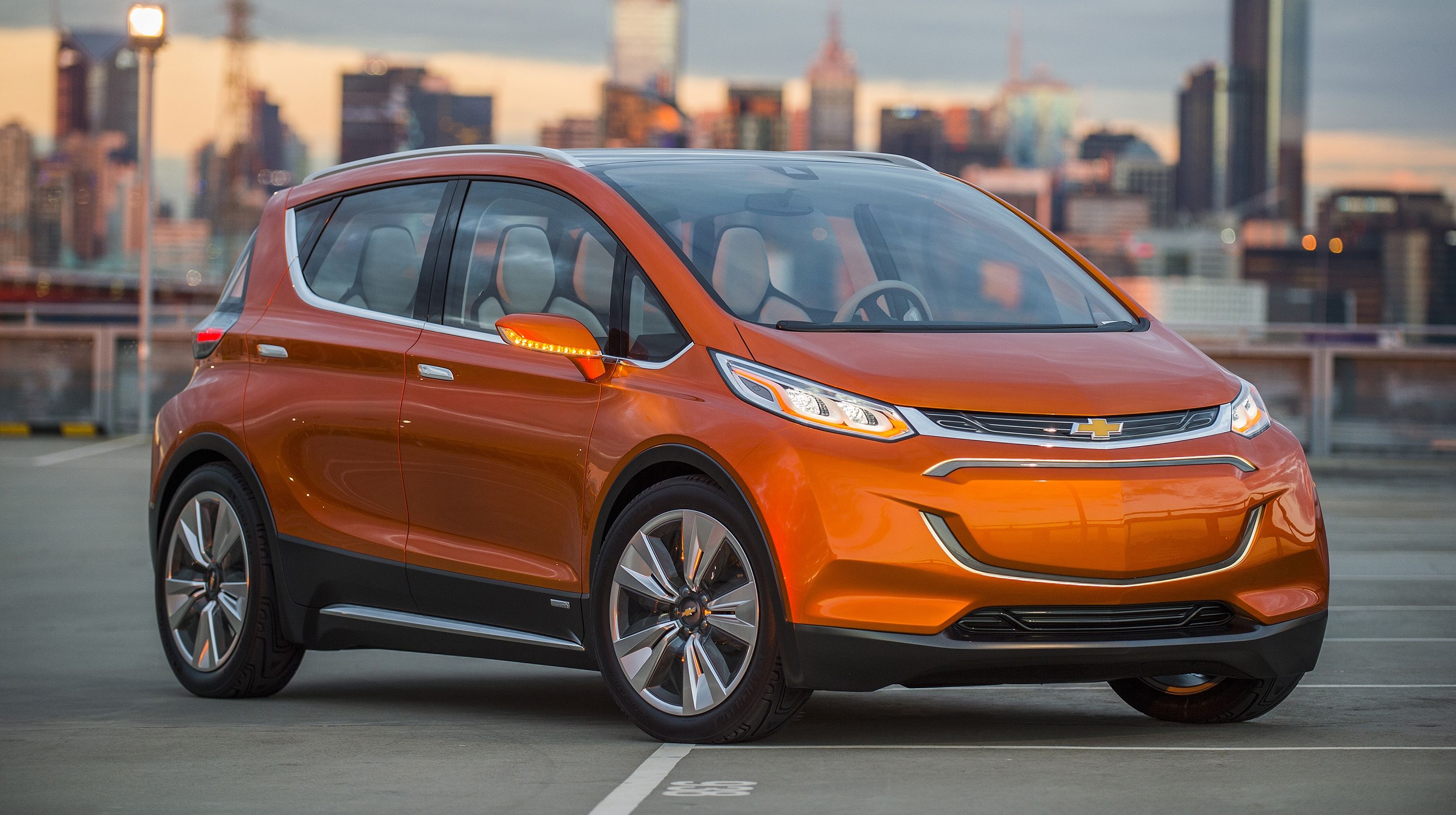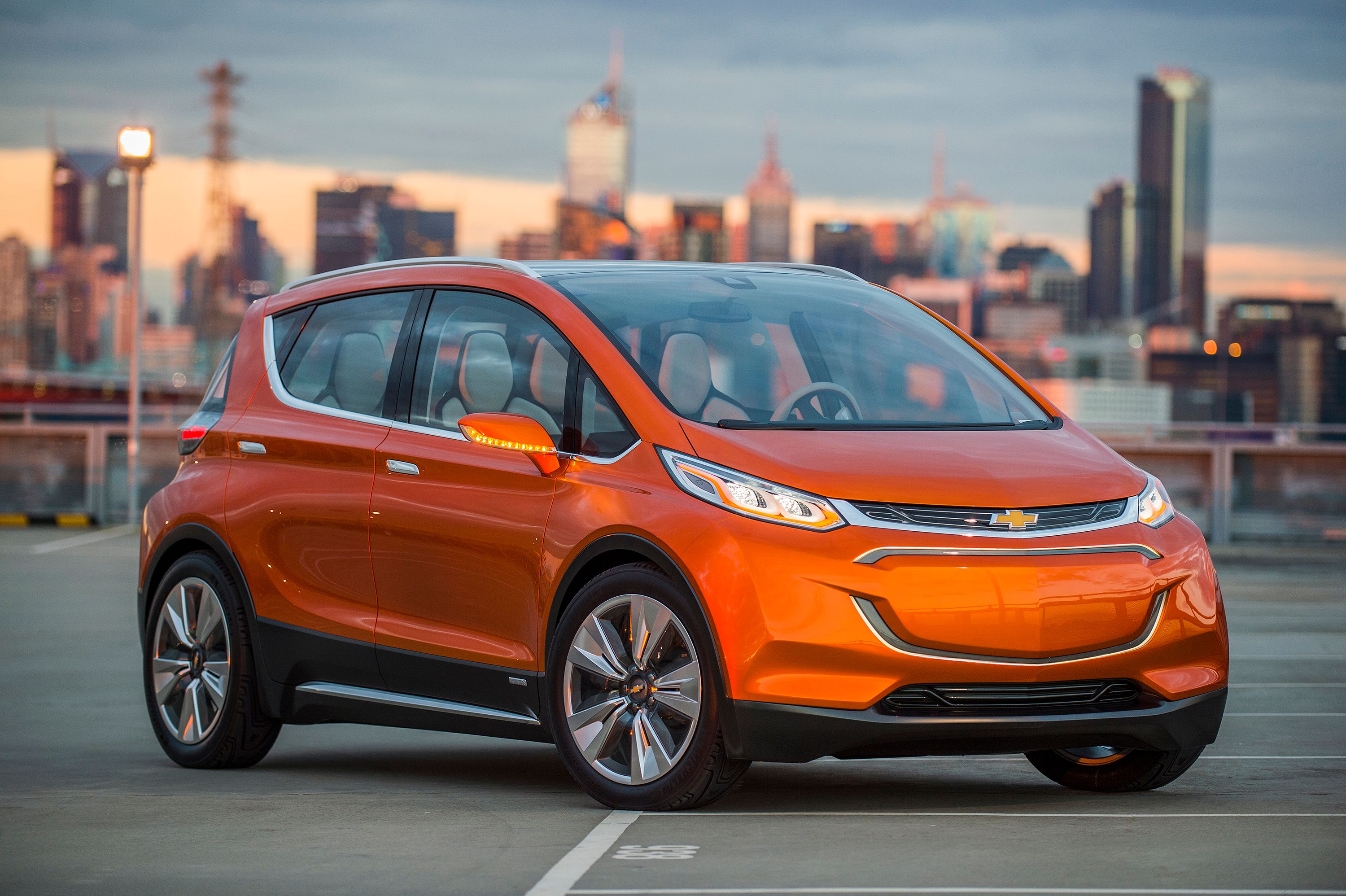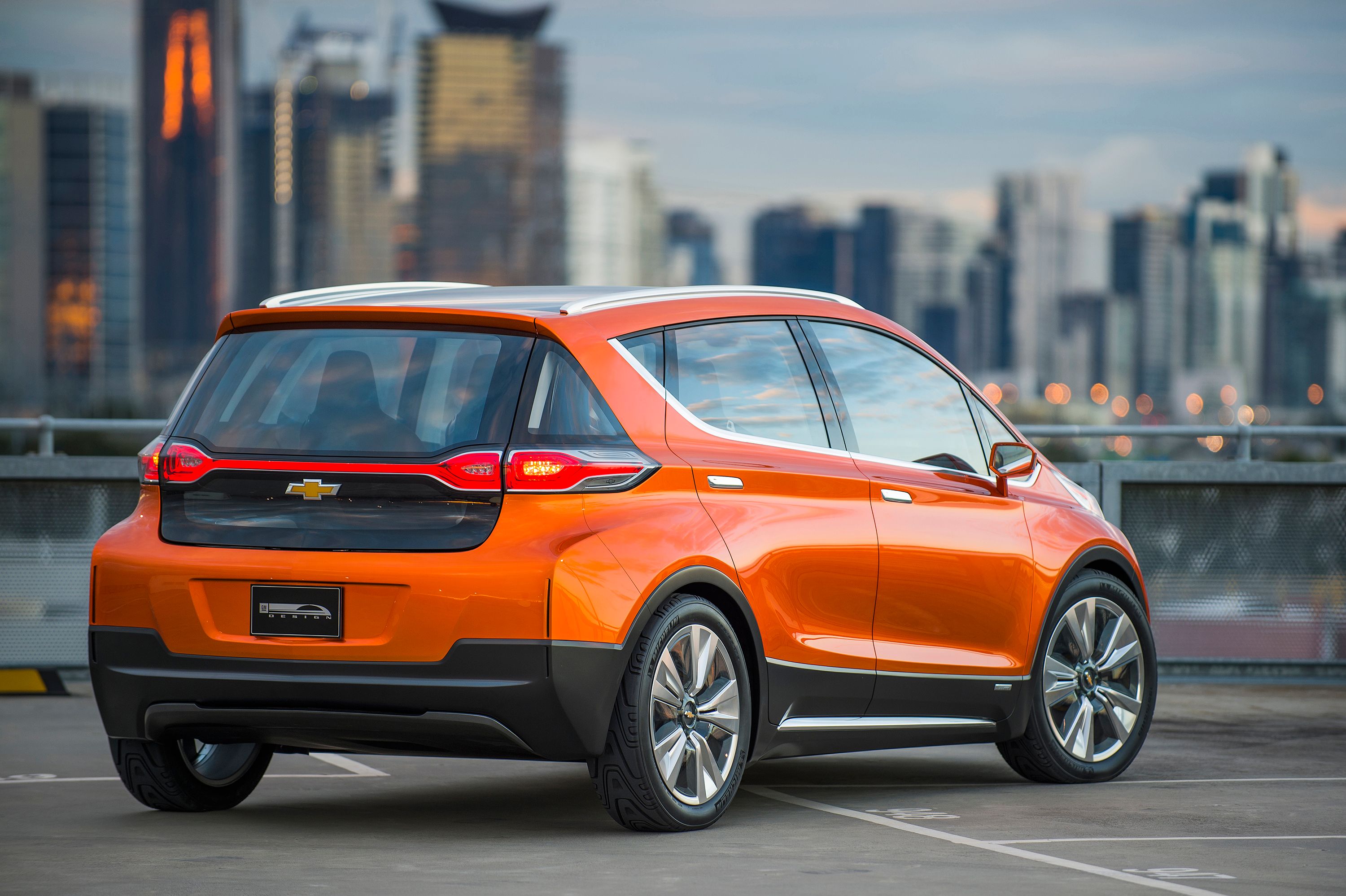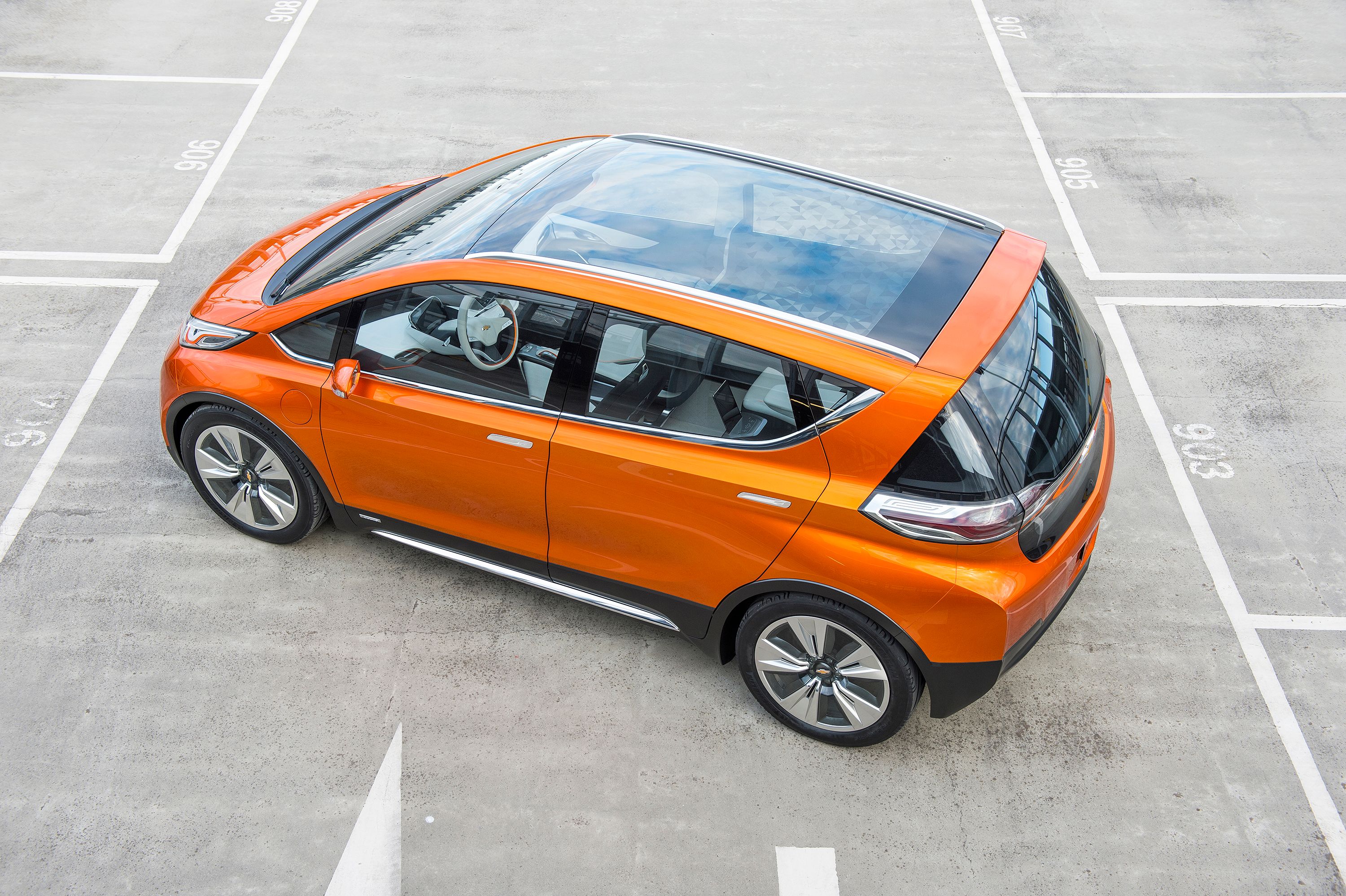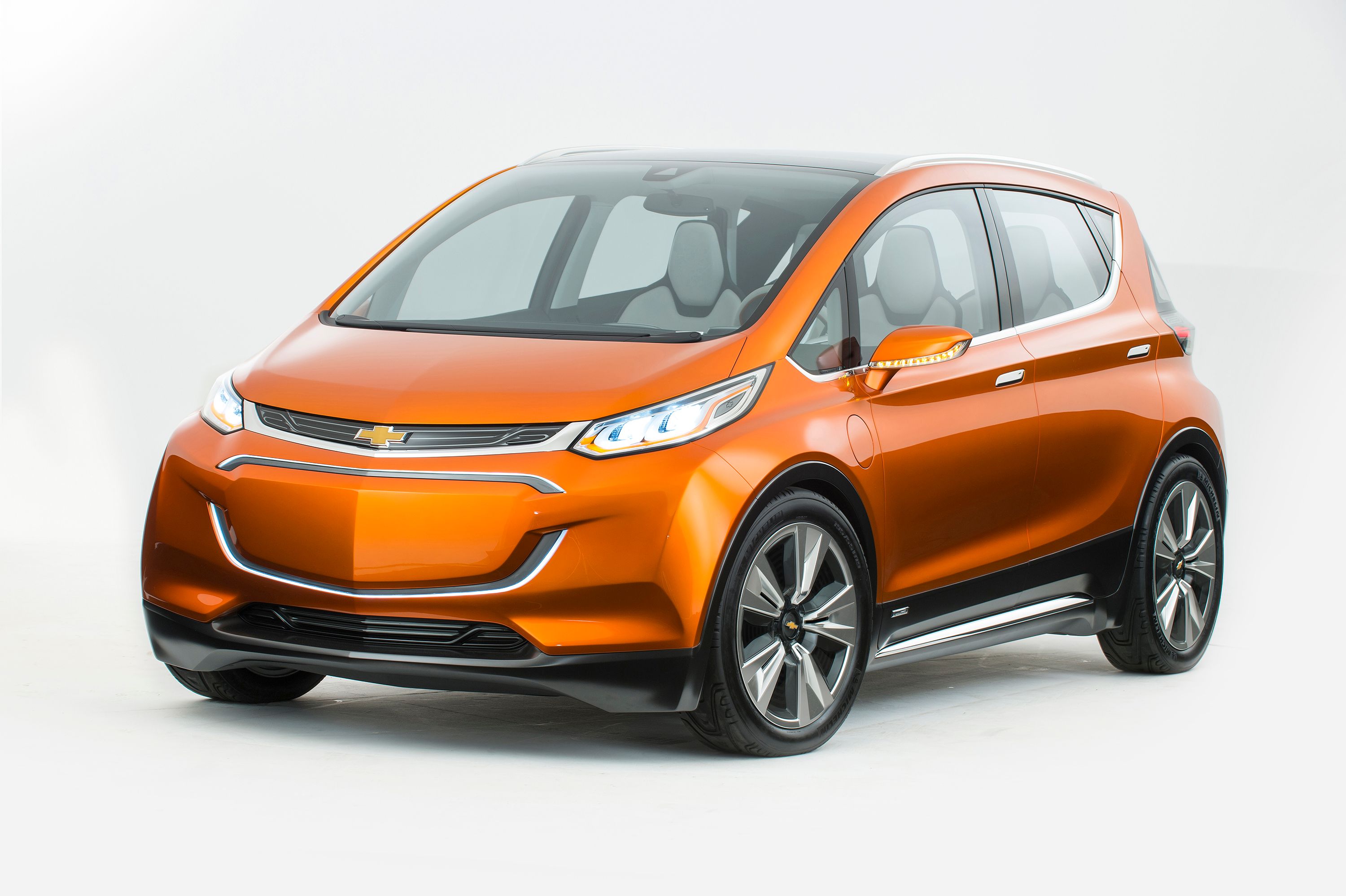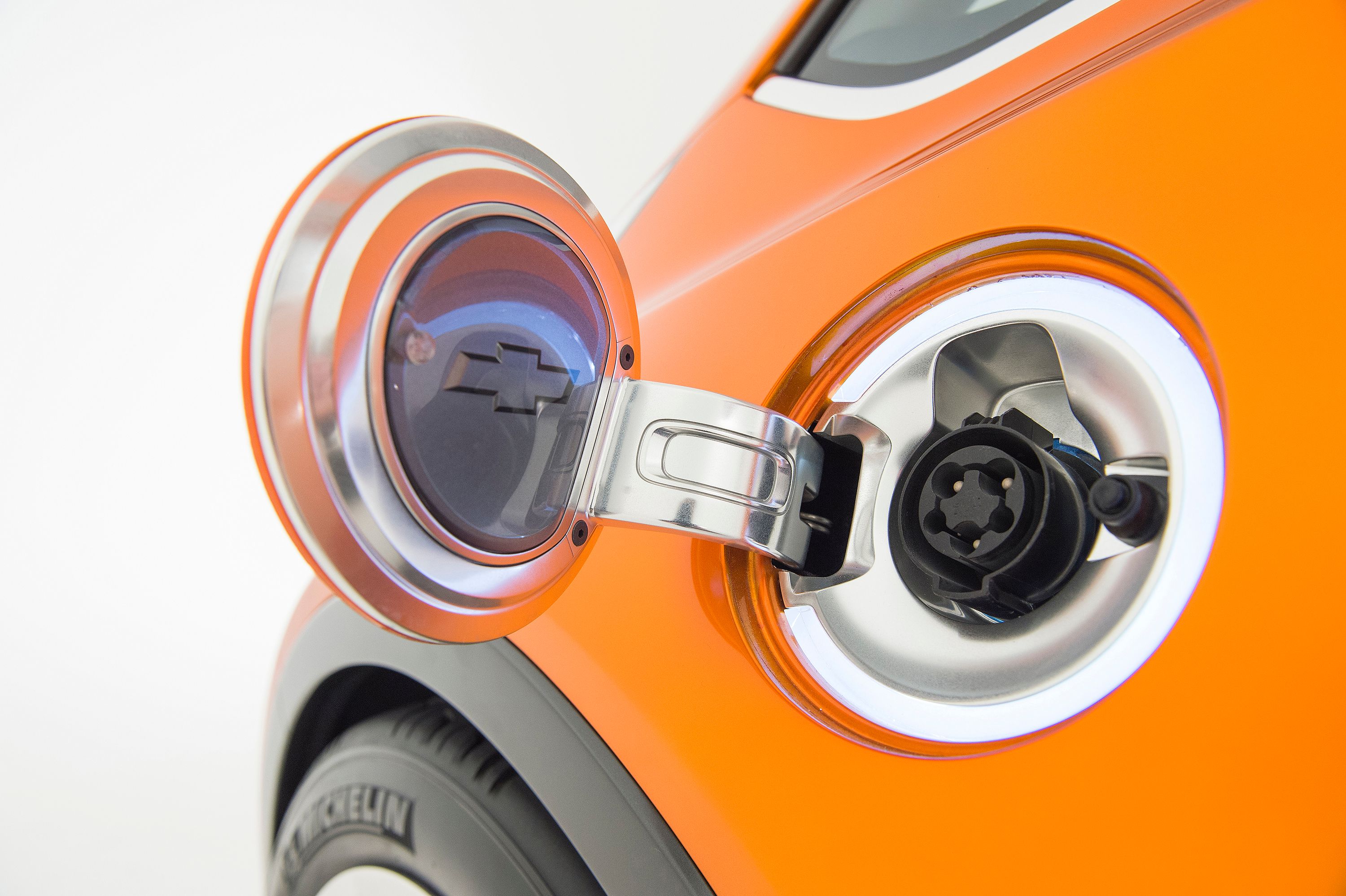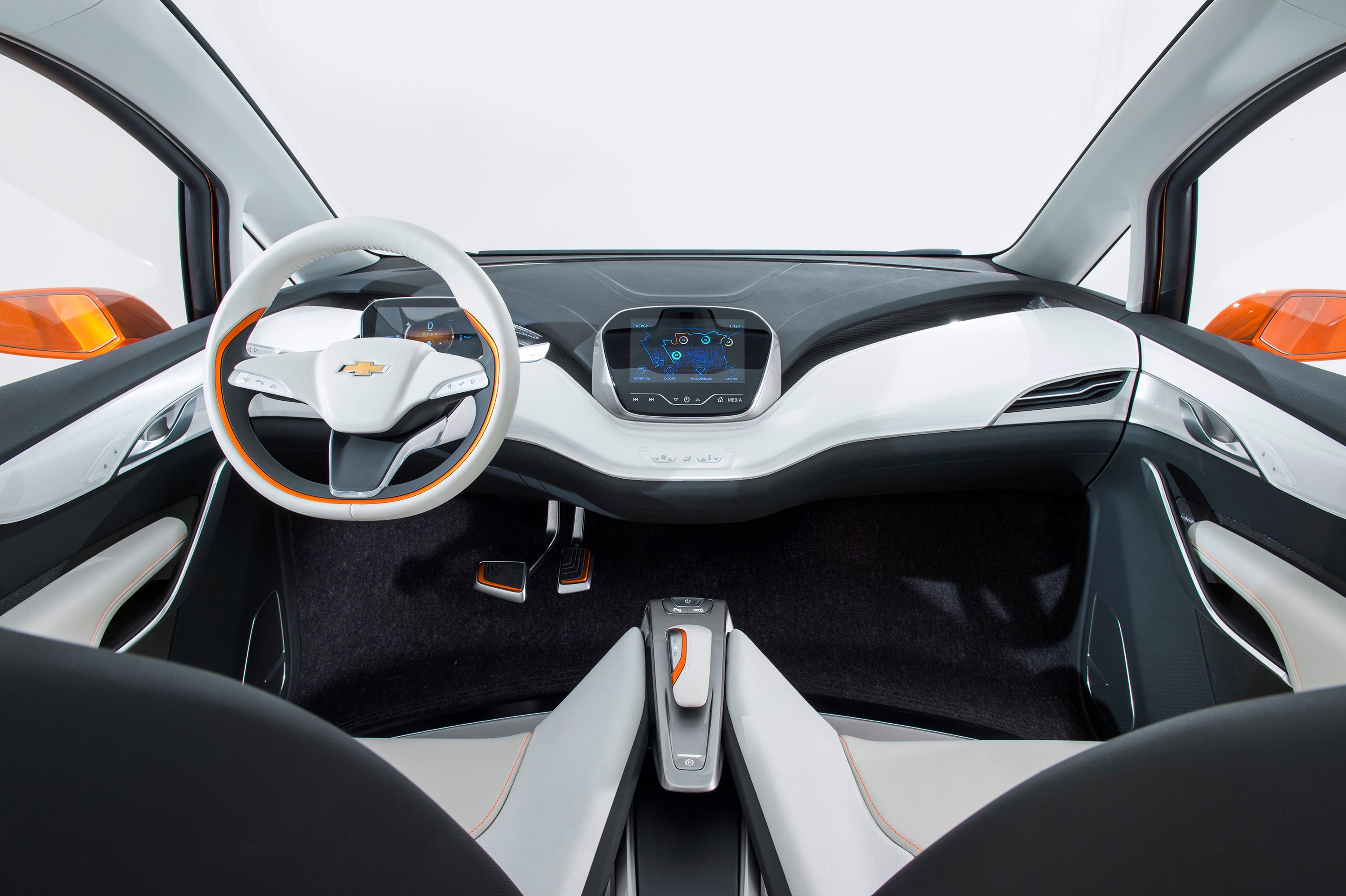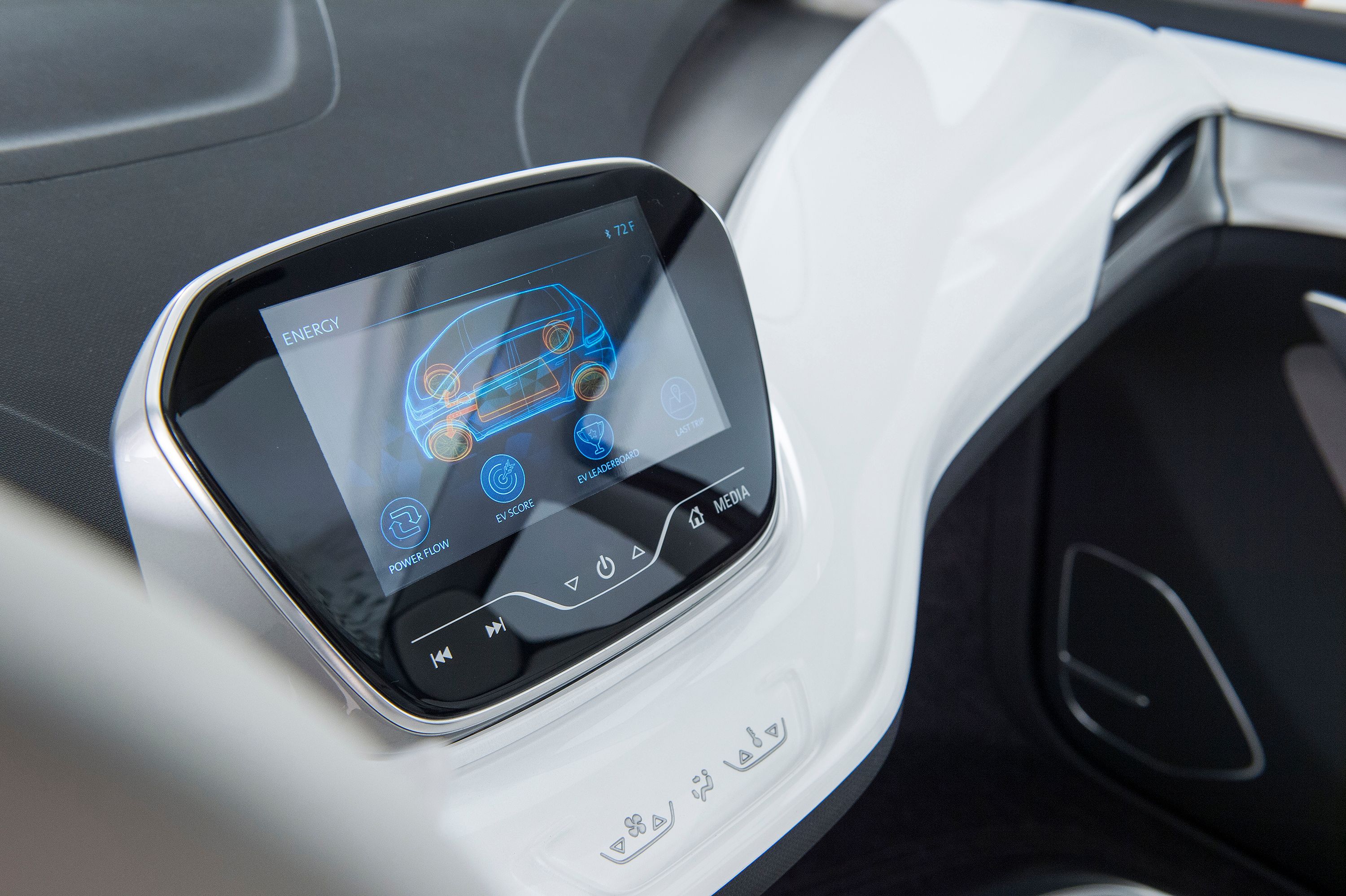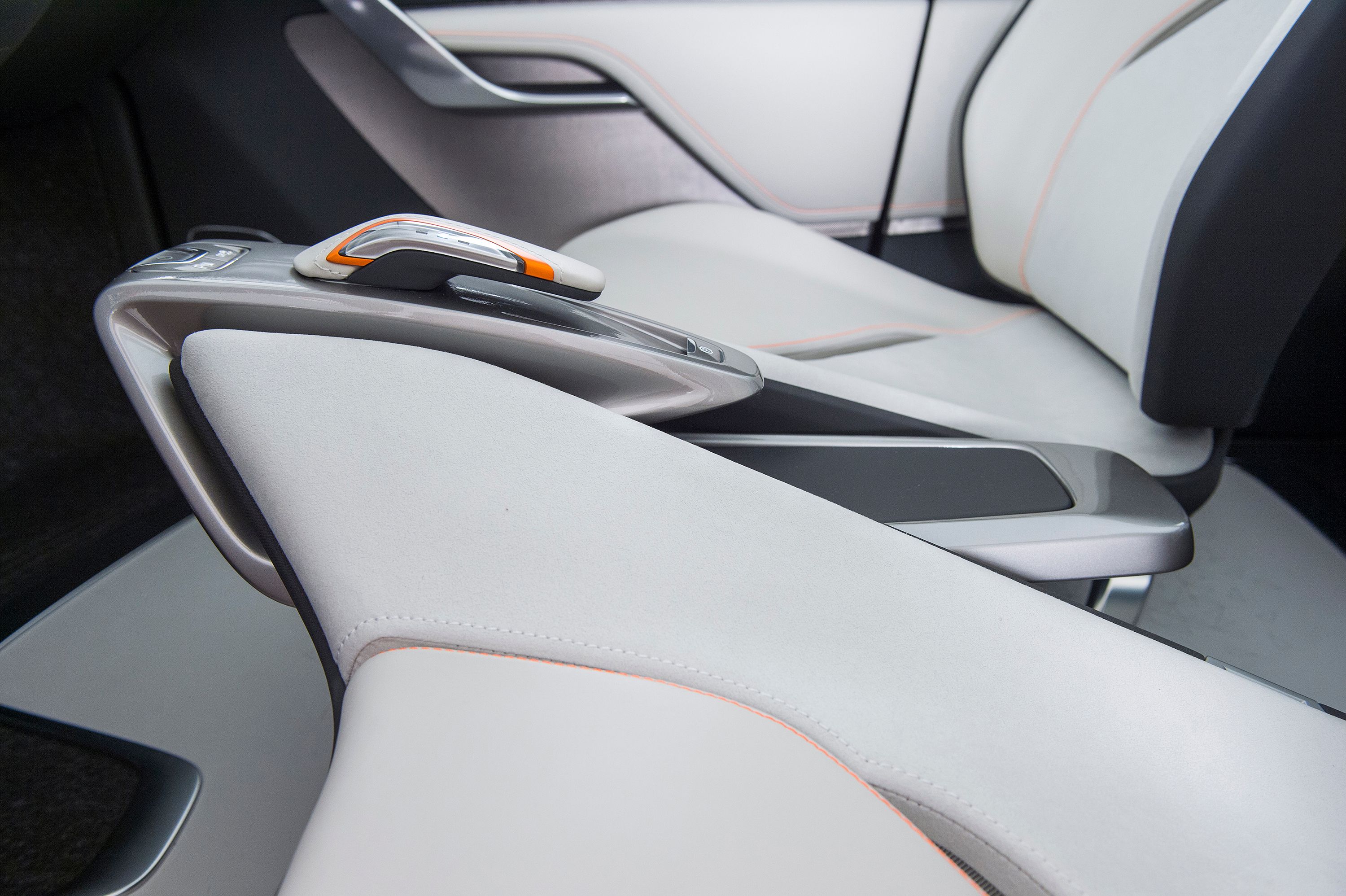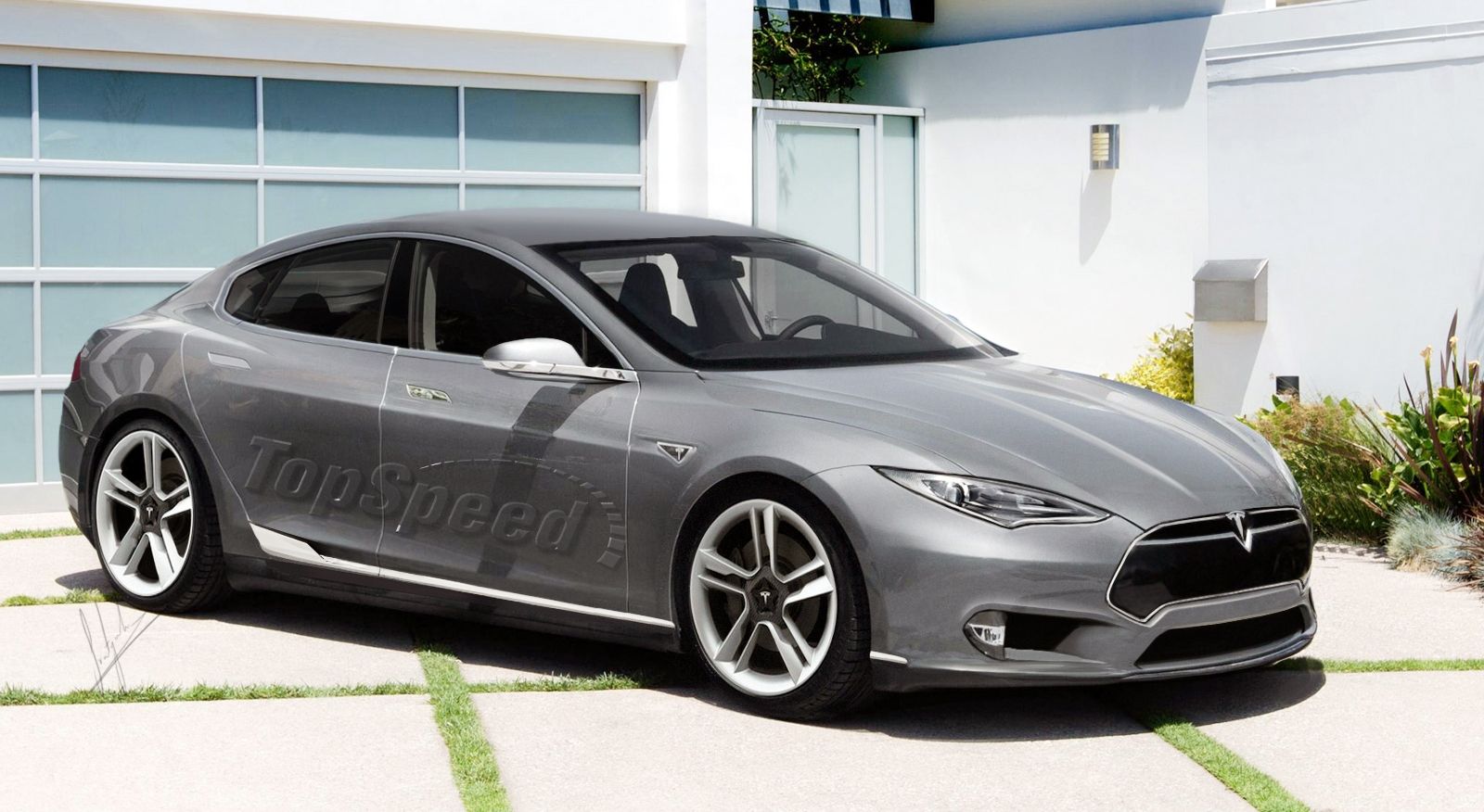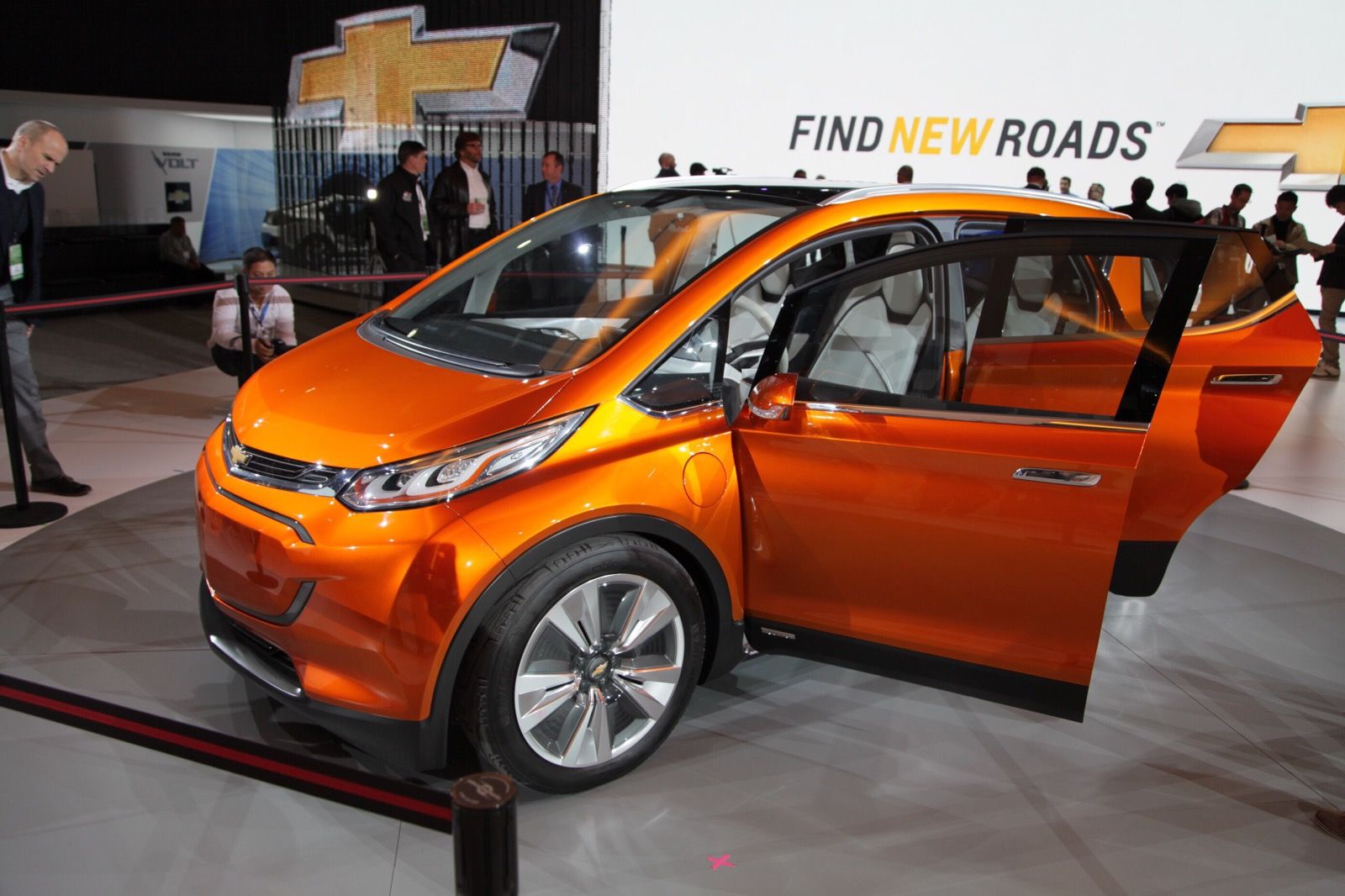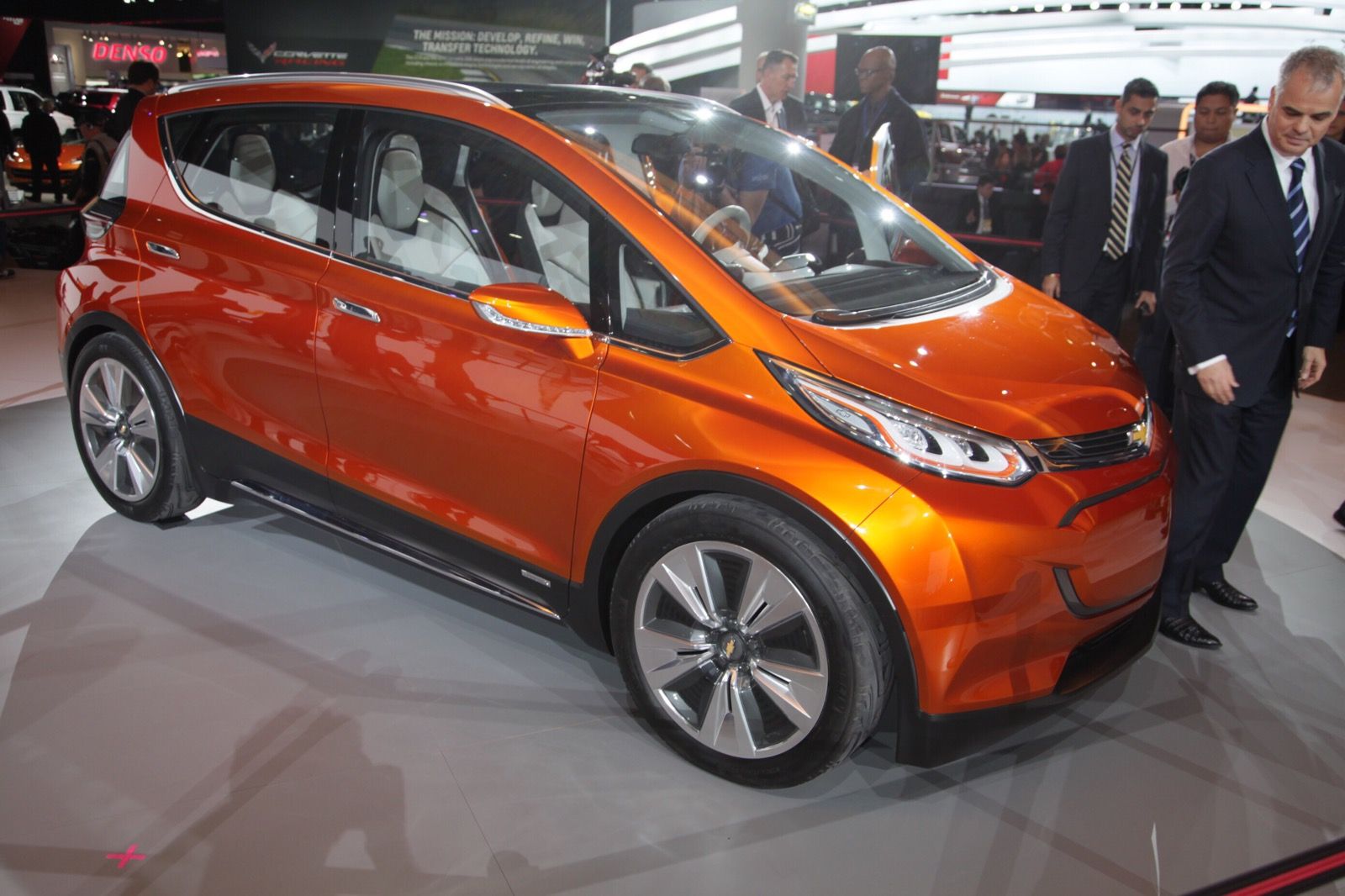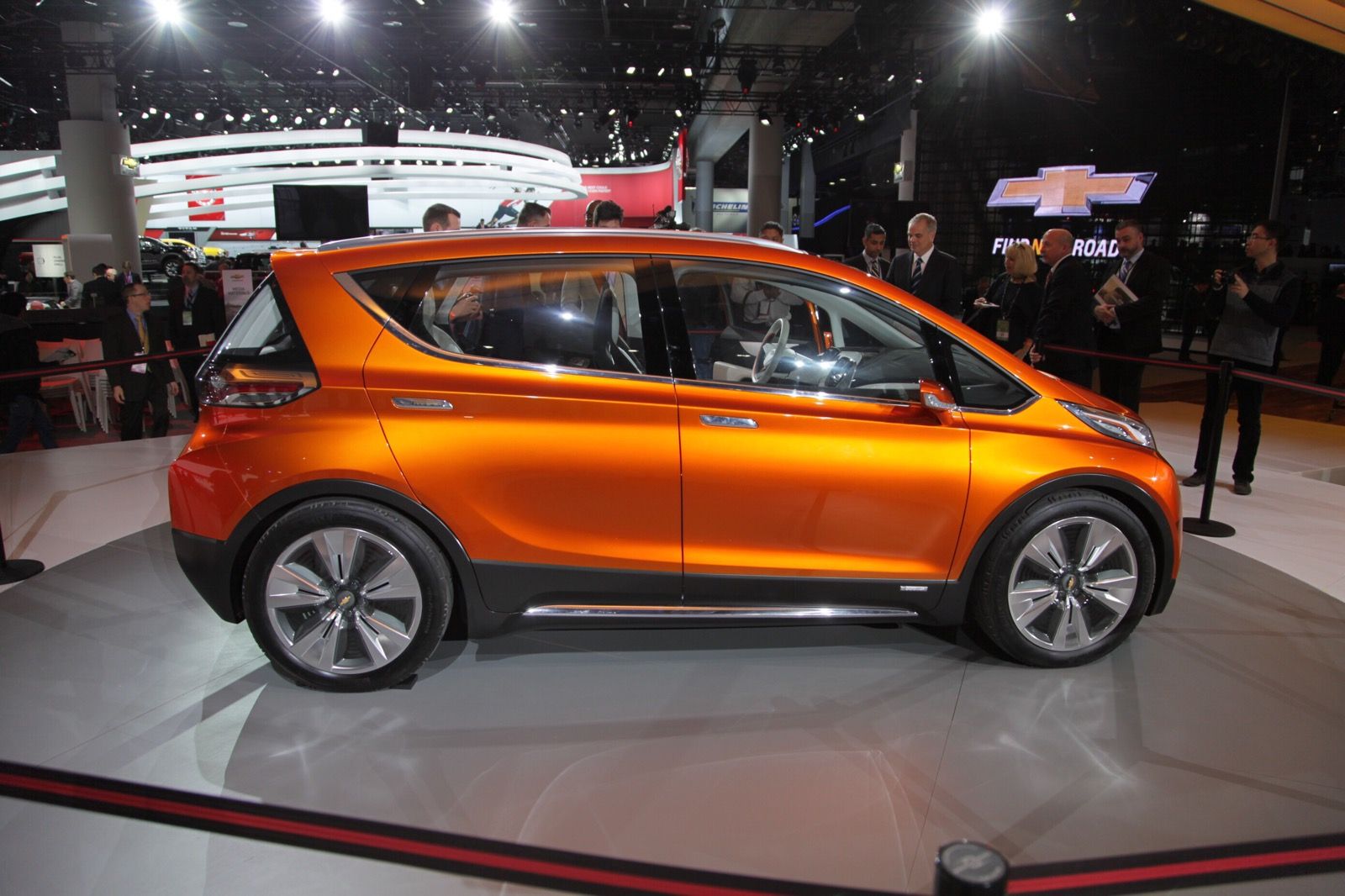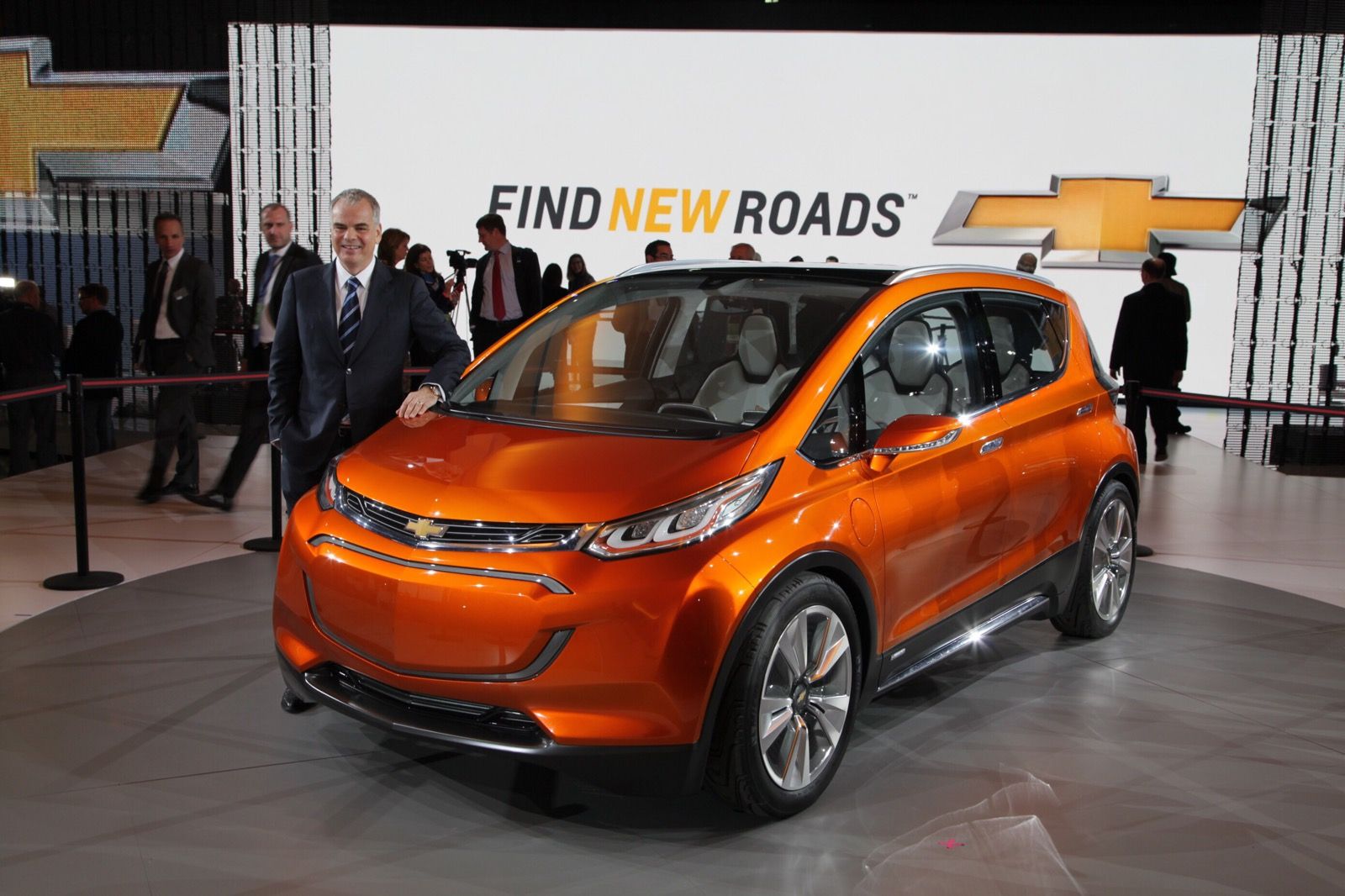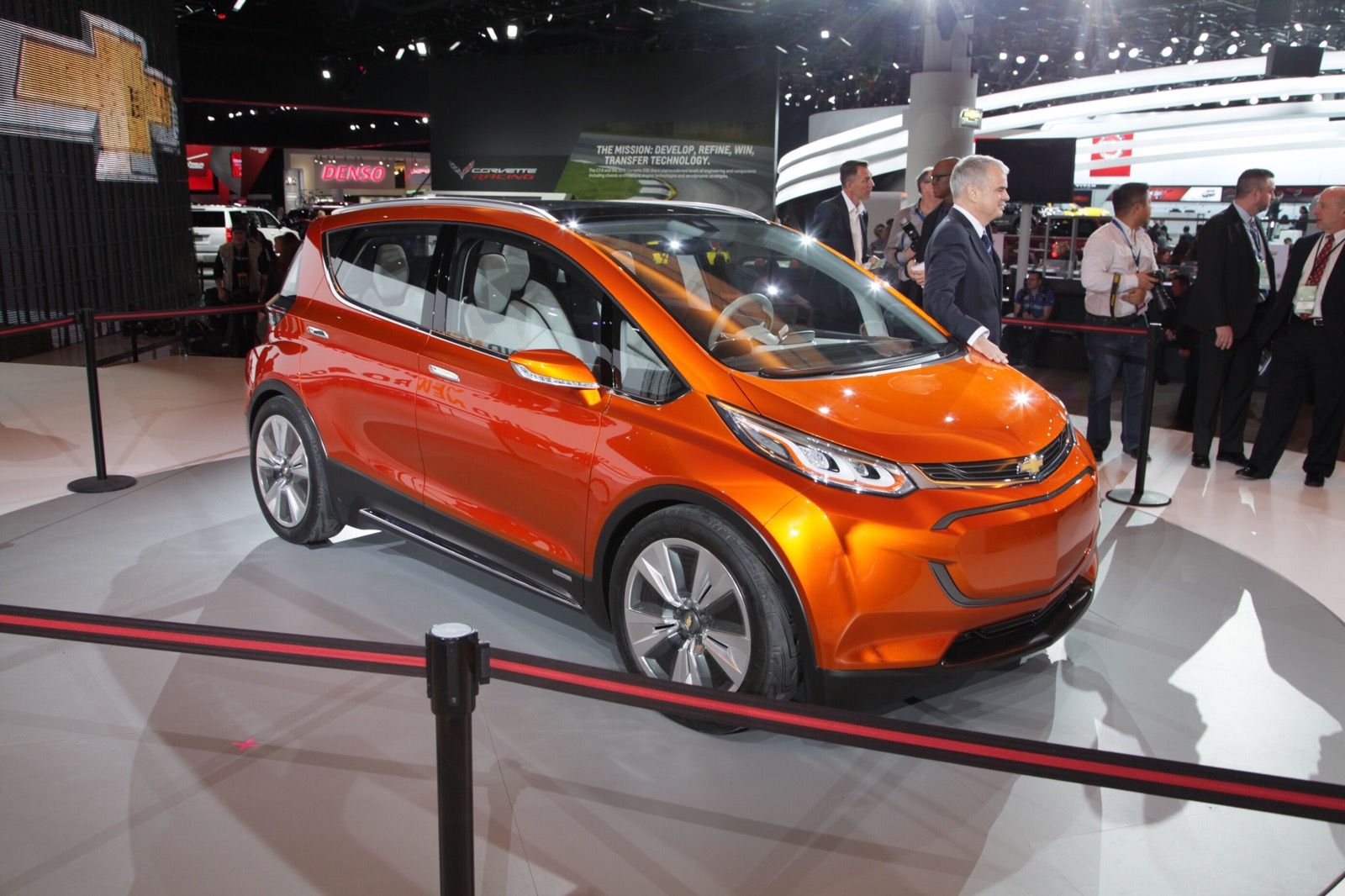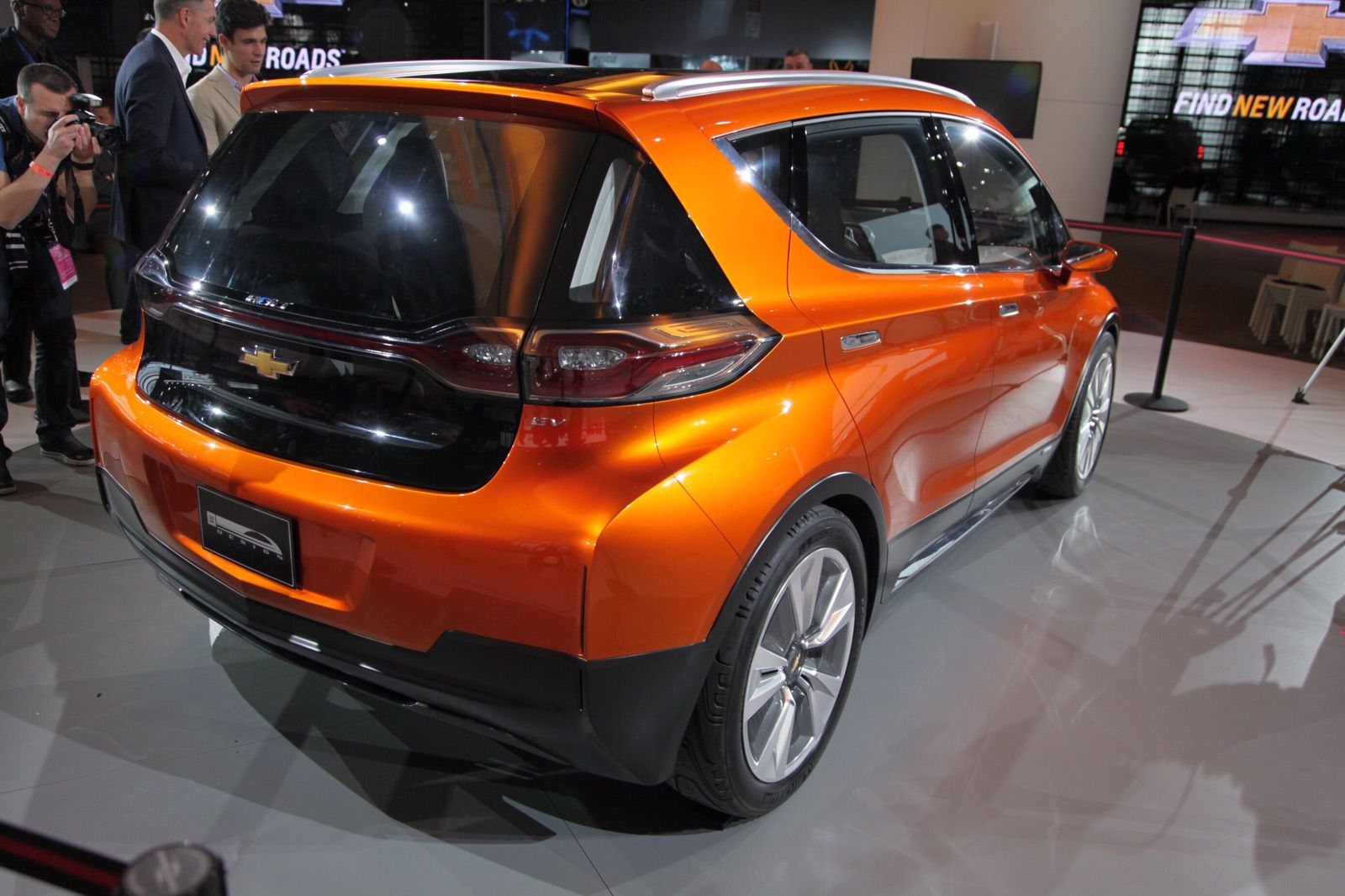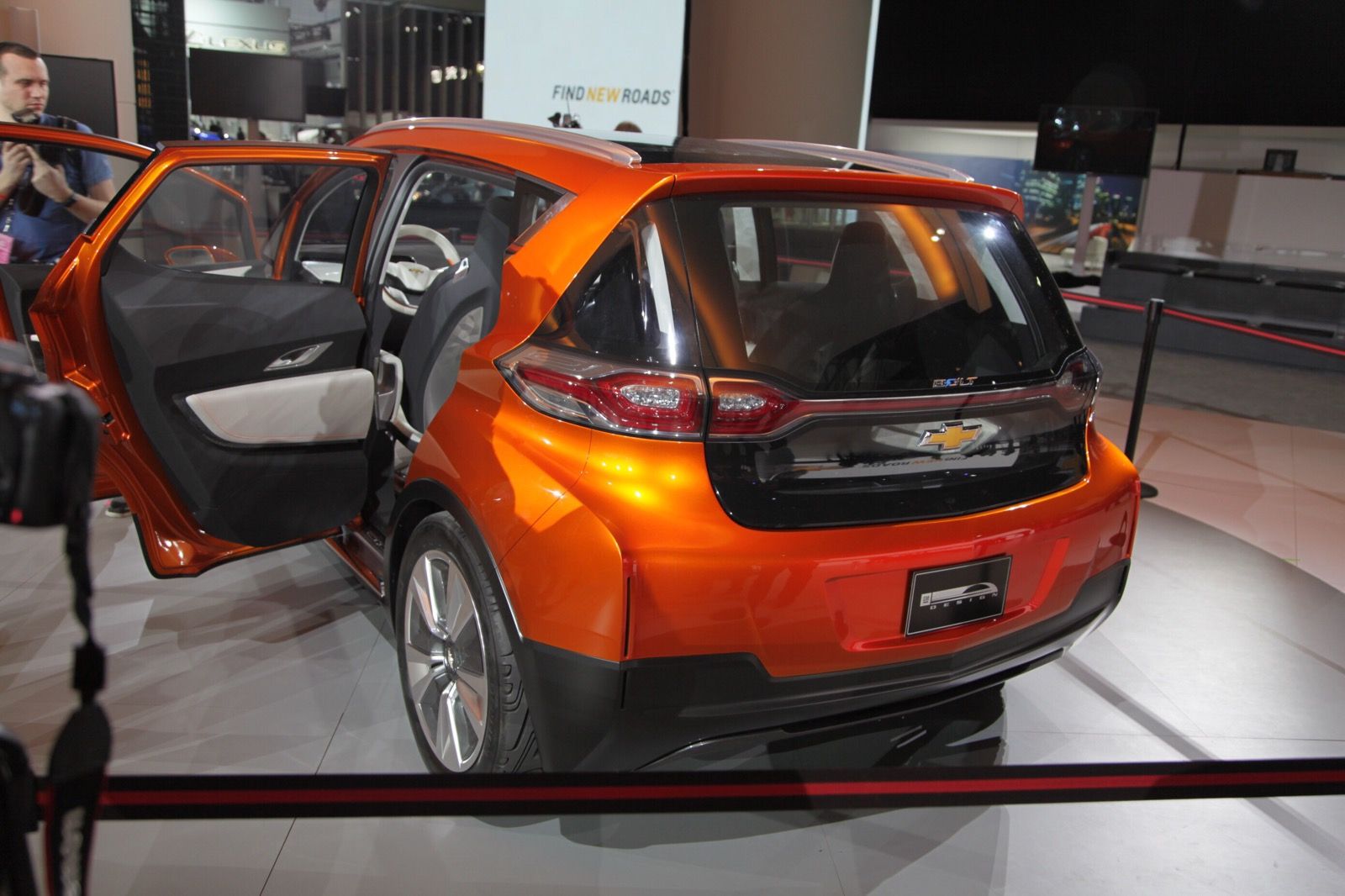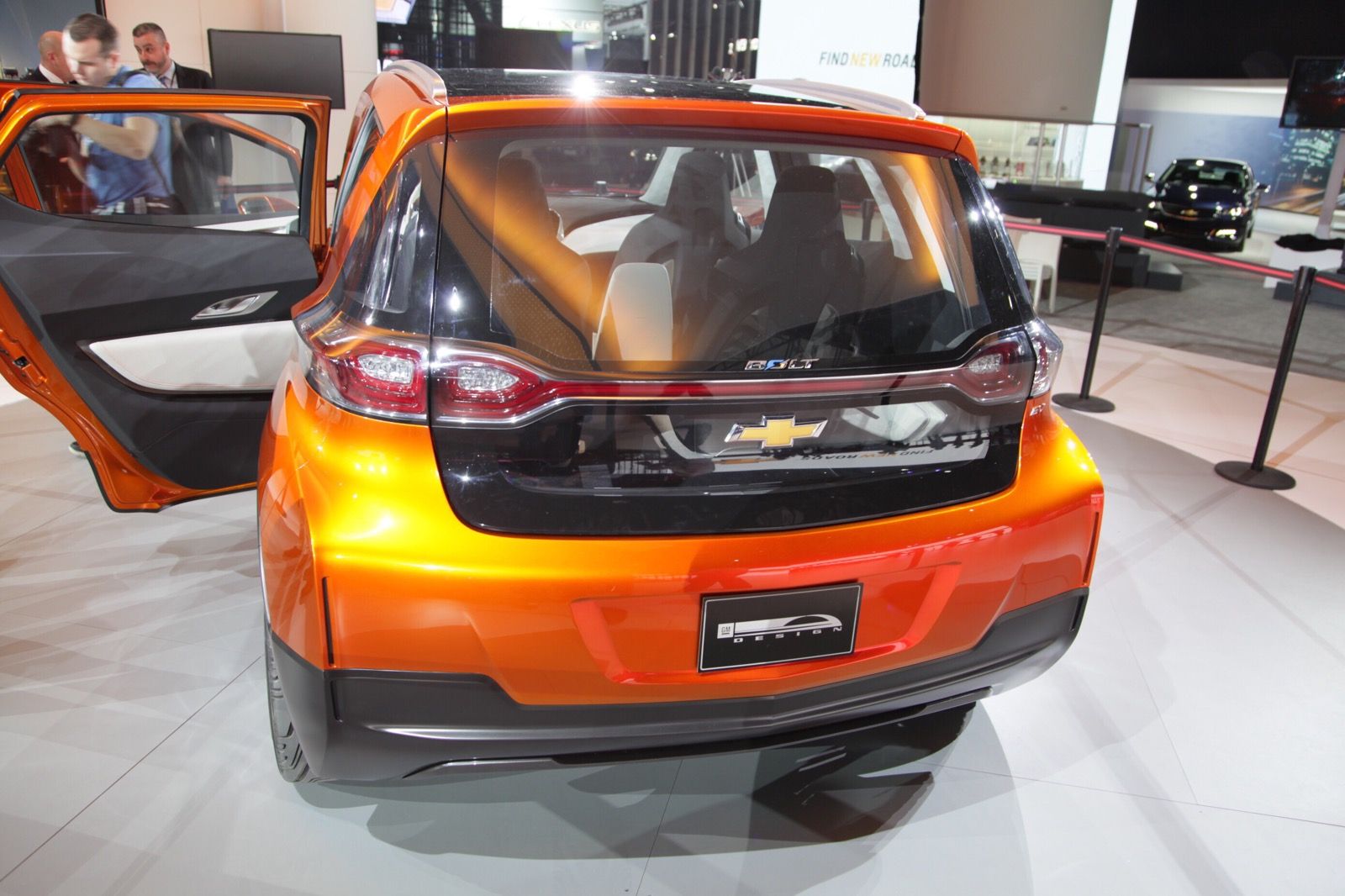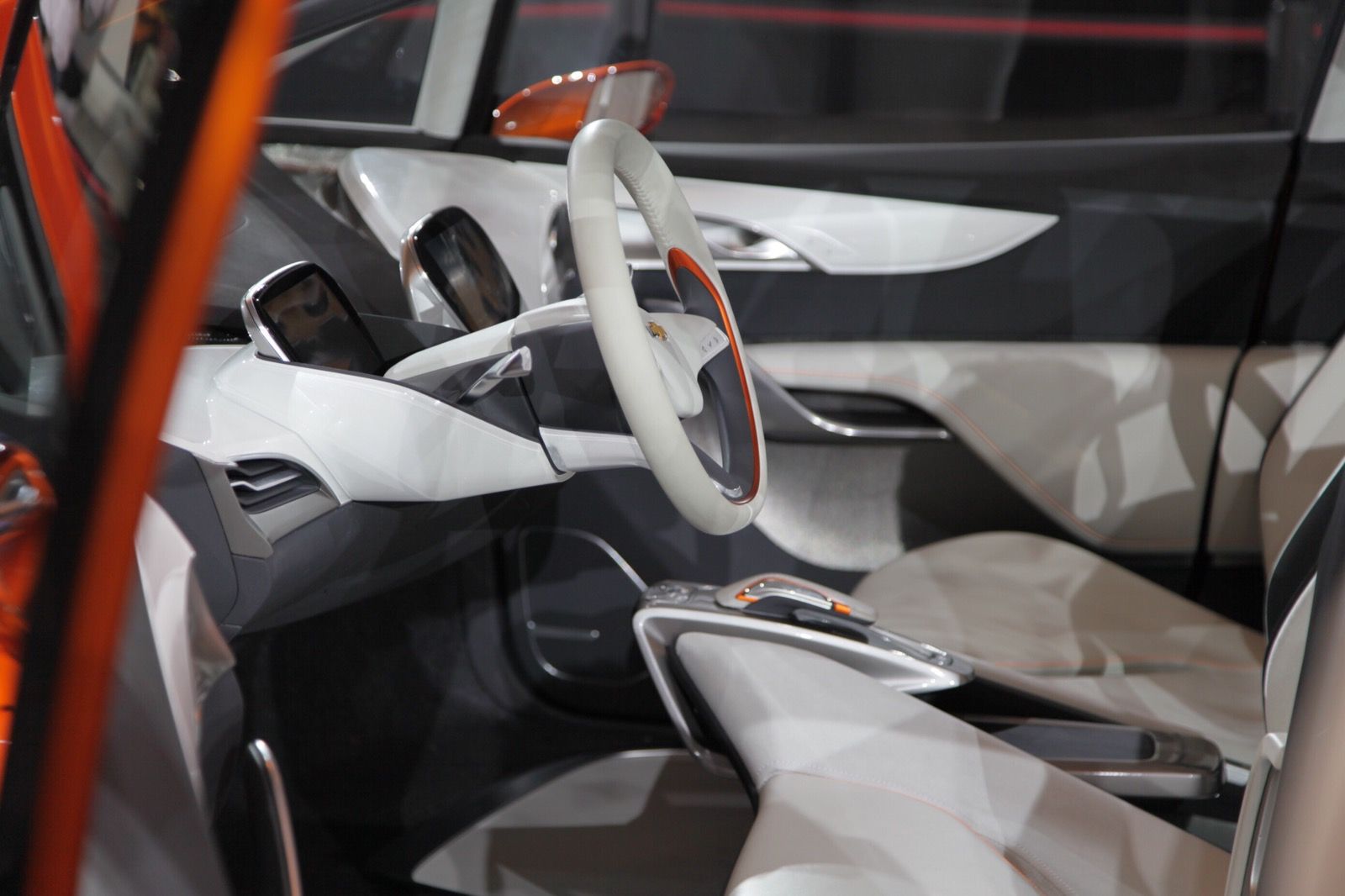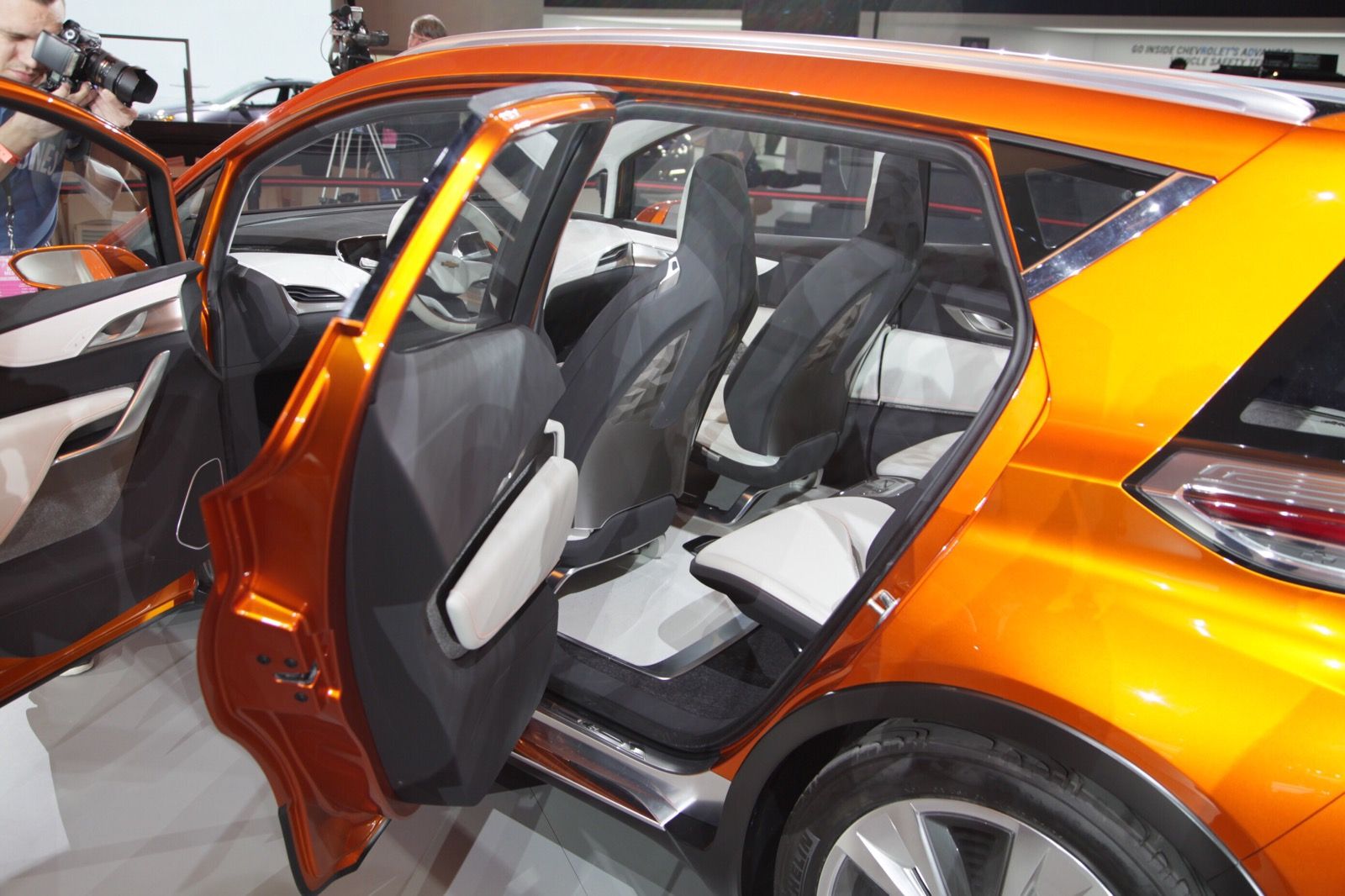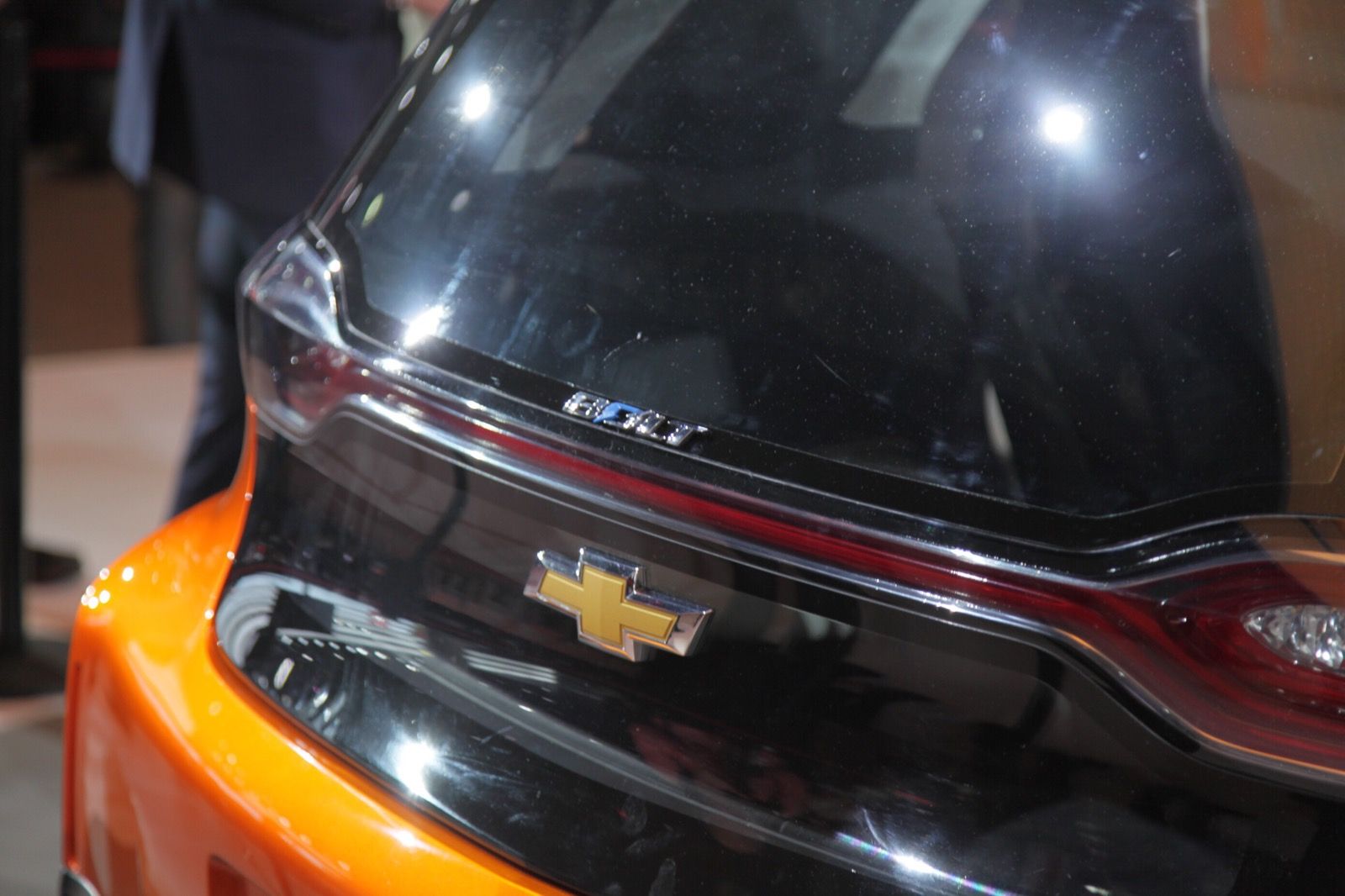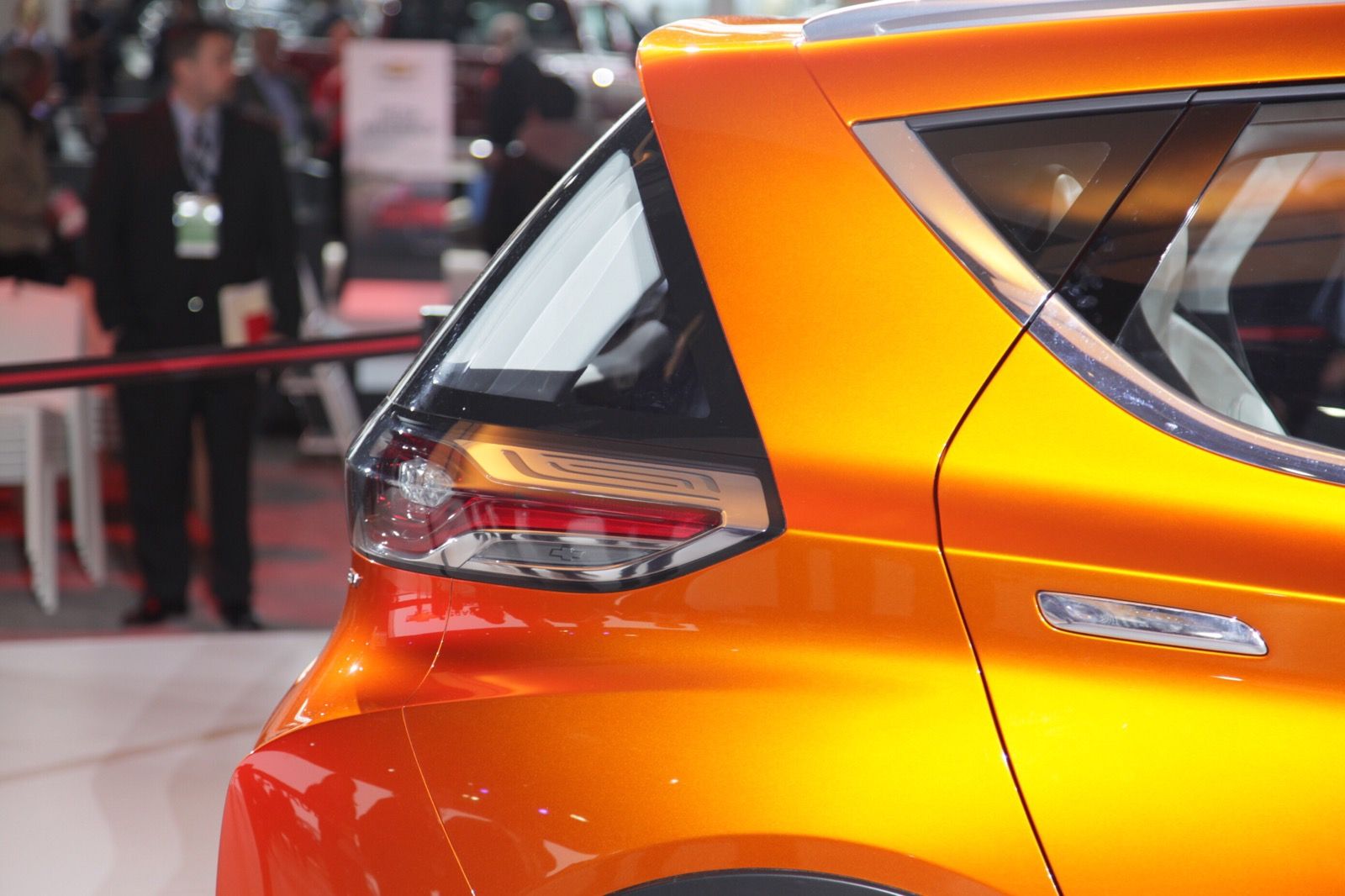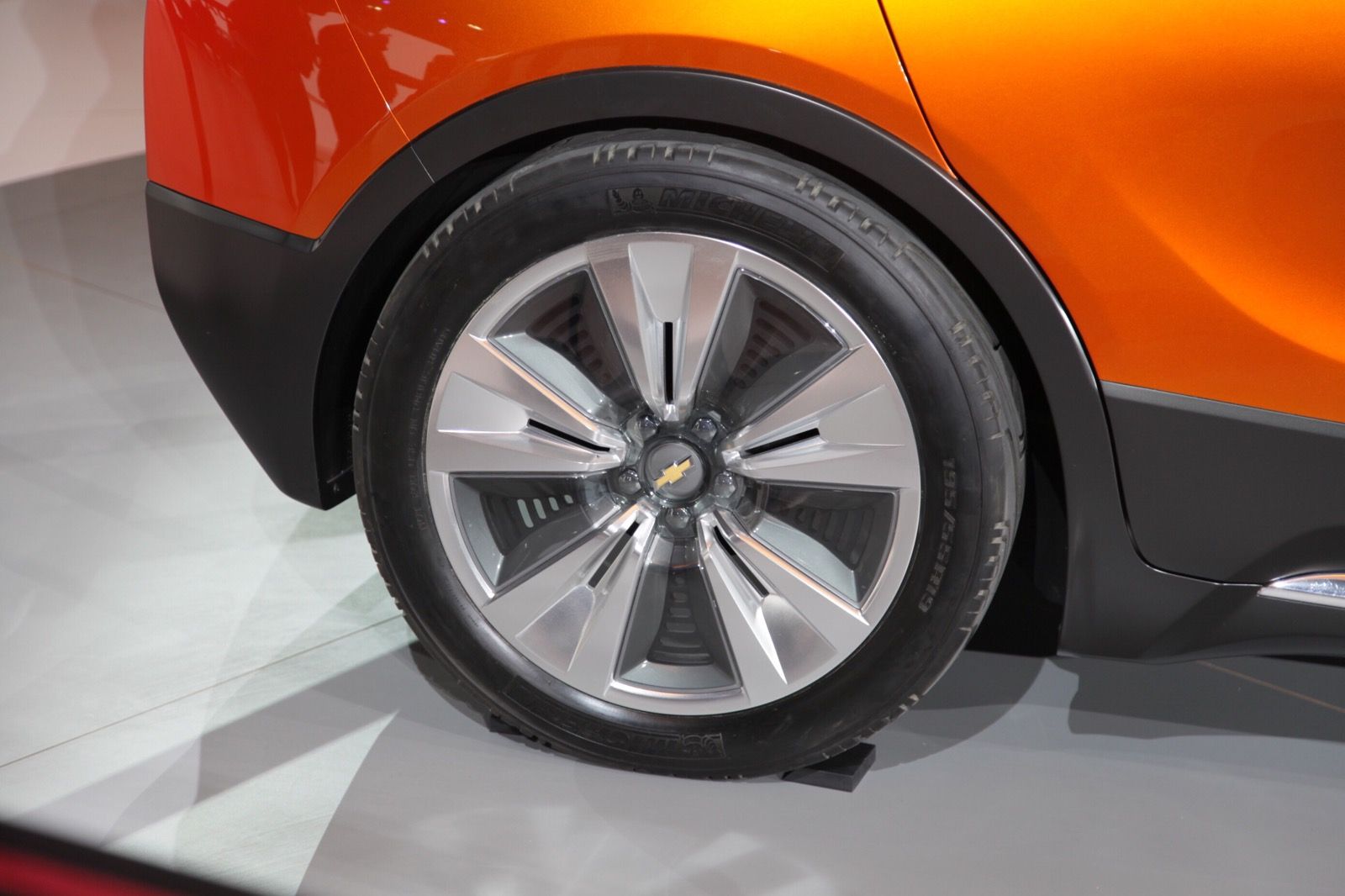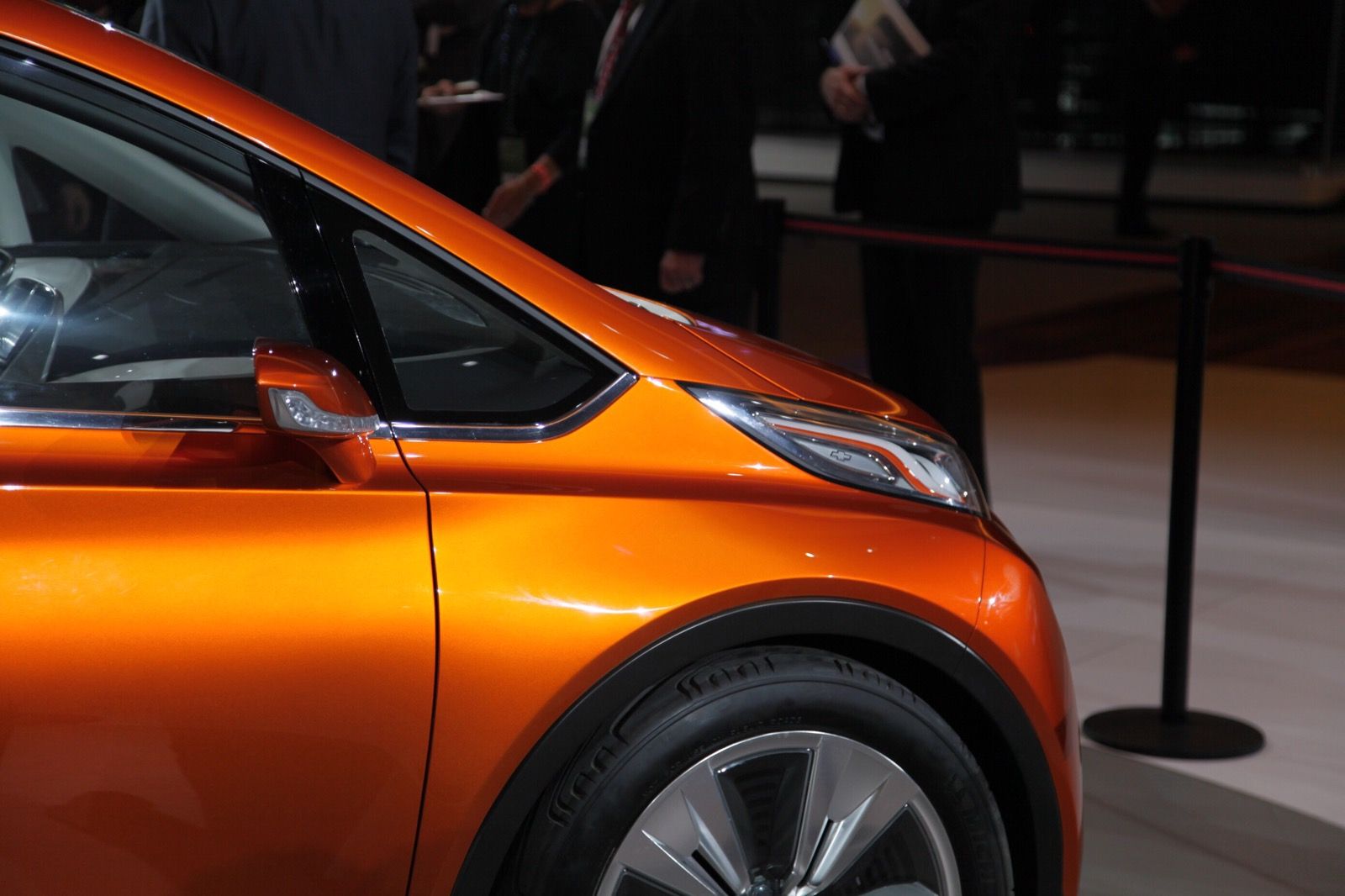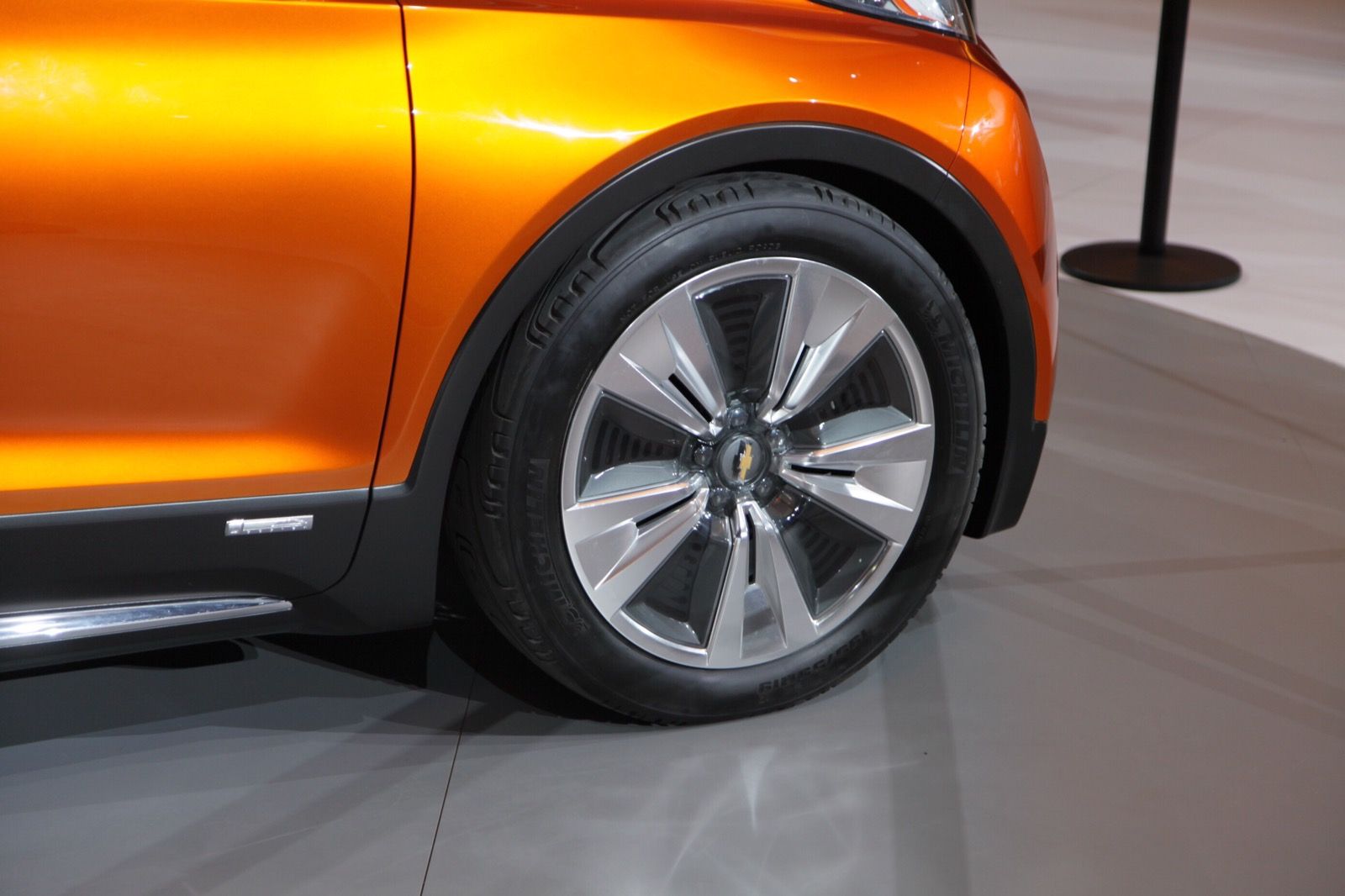General Motors->ke1024 appears to be interested in adding to its green car lineup with a new compact crossover->ke288 called the Bolt EV. While still just a concept, the Bolt would slot in neatly alongside the new 2016 Volt and Spark EV, both of which are already humming their way up and down public roads. The Bolt is designed as a way forward in Chevy’s ambition to provide an affordable, long-range, all-electric vehicle, with a roughly $30,000 starting price and more than 200 miles stated as objectives for the first two adjectives of that description, respectively.
“Chevrolet believes electrification is a pillar of future transportation and needs to be affordable for a wider segment of customers,” said General Motors CEO Mary Barra in a press release. Price and range are two of the most important factors when it comes to widespread EV adoption, so GM clearly has the right idea going for them.
At first glance, the Bolt appears well rounded, both physically and metaphorically. The exterior body looks optimized to reduce drag, while the interior is pleasantly equipped and laid out. It’s a design that’s somewhat reminiscent of the BMW i3, albeit with a dollop of futuristic, concept-ish gloss smeared across it.
If GM wants to be a leader in the world of electrics and hybrids, this would certainly be a step in the right direction. Chevy has yet to confirm any intentions to put the Bolt into production, but rumors are circulating that it could go on sale in the U.S. and limited overseas markets in 2017.
In the meantime, we’ll just have to pick apart the new Volt hybrid for some domestic green car goodness. Maybe we’ll even see yet another foray into the world of EVs from GM. Here’s our pitch: an electric bus for new-age hippies. We’ll call it the Ohm.
Updated 01/23/2015: We've added a series of new images from the car's official debut at the 2015 Detroit Auto Show. Check the new images in the "Pictures" tab.
Click past the jump to read more about the Chevrolet Bolt EV Concept.
2015 Chevrolet Bolt EV Concept
- Make: Array
- Model: 2015 Chevrolet Bolt EV Concept
- Horsepower: 150
- Torque: 300
- [do not use] Vehicle Model: Array
Exterior
When it comes to efficiency, every little bit helps. As such, Chevy smartly focused on keeping the Bolt’s curb weight to an absolute minimum, using materials like aluminum, magnesium, and carbon fiber in its construction, plus something called “nano-composite” in the hatch. Aerodynamically, there are features like vented rear fenders, which should also contribute to additional miles per charge.
The Bolt has tall proportions and five doors, working wonders for people and thing-carrying. The rear window wraps around into the flanks of the vehicle, combining with a large, frosted glass roof to provide ample viewing of the outside world. High-intensity LEDs are used for the headlamps and taillights.
It’s a package that should entice quite a few folks. The Bolt looks like the right kind of vehicle to secure the popular vote, combining an SUV stance, compact size, teardrop efficiency, and loads of practicality.
Interior
Like most concept vehicles, the interior for the Bolt is big on design and technology. Chevy wants to give buyers the ability to control several aspects of this car via their smartphone, including using it as a key fob, ride share management (reservations, vehicle location, and payment processing), and coolest of all, self-parking. Just drop yourself off, tell the car to go park, and it’ll find you when you’re ready to leave. There’s also a 10-inch touchscreen that displays application and mobile info via an app called Bolt EV Connect.
Chevrolet used the condensed electric drivetrain to open up the Bolt’s interior, offering additional headroom over what’s normally found in a petrol-powered vehicle of similar dimensions. Additionally, the lack of a transmission gives the floor a bit more space for legs.
“Its unique proportion, with practically no front or rear overhang, makes the most of interior space and was designed to create a roomy environment for four that feels expansive,” Chevy says in a press release.
Abundant exterior glass was used with the intention of creating an overall ambiance that was “airy”, a motif continued in the light interior color scheme. Also, take a peek at the seatbacks and the roof, and you’ll see some nifty faceted design elements.
The center console drips down from the dash to create a “floating” aesthetic that is mirrored in the exposed aluminum seat pedestals. It looks quite good, with excellent use of minimalistic control elements. The dash appears to overlap into the door panels, with a milky coloration that gives off “a subtle glow at night.”
Drivetrain
Understandably, details are hard to come by when it comes to the drivetrain responsible for propelling the Bolt more than 200 miles per charge. But if we were to venture a guess, it would probably look like a tweaked electric motor from an existing GM product, somewhere in the 150-horsepower, 300-pound-feet-of-torque range, with a new battery pack attached. Despite this bit of concealment, Chevy did have a few interesting tidbits to share in its press release:
“Drivers will be able to select operating modes designed around preferred driving styles such as daily commuting and spirited weekend cruising, for uncompromising electric driving. The modes adjust accelerator pedal mapping, vehicle ride height and suspension tuning. The Bolt EV concept is also designed to support DC fast charging.”
The quickcharging feature is an absolute must on a car like the Bolt, but the selectable driving modes are intriguing. On an EV, selectable drive modes usually only adjust the engine output for either responsiveness or efficiency. With ride height and suspension tuning also available at the touch of a button, perhaps Chevy intends on giving the Bolt a small slice of sporting intent. We can only hope.
Pricing
At $30,000, the Bolt is the right amount of money considering the equipment and features, especially if they come standard. Most important, however, is the extended range, which will help reach those individuals who want an EV, but have to drive more miles than the current crop can provide. How much the EV market will change in the next few years is a variable that remains to be seen.
Competition
Tesla Model III
Chevy clearly singled out Tesla when it announced the new Bolt EV, specifically Tesla’s upcoming Model III. Scheduled for release in 2017, the Model III takes the success of the Model S and makes it more accessible, with pricing starting around $35,000. Add in a 200-mile range, and it’s clear GM is looking to pick a fight. Details around Elon Musk’s latest creation are sketchy, but hard facts should emerge following the release of the new Tesla SUV, the Model X.
BMW i3
Taking fourth place last year on our annual TopSpeed New Car of the Year list, the i3 is the Bavarian’s all-electric comfort sphere designed to provide about 115 miles of hassle-free, zero-emissions driving. There’s also the option to add in a twin-cylinder petrol engine, which extends total range to 180 miles.
This BMW includes similar interior features to those you’d find on the Bolt, like a large color display, navigation, mobile connectivity, and an optional sunroof. You don’t get any 23rd-century tech like self-parking, but you do get everything you’d expect on a car in 2015, plus some nice materials to boot. While a base model is pricier than the Bolt at $41,350, the i3 is nonetheless a good ideal for Chevy to strive toward in terms of fit, finish, and quality of product.
Volkswagen E-Golf
Combining the ageless Golf hatchback body with a plug-in electric driveline, the E-Golf delivers up to 118 miles of range per charge from a single electric motor, rated at 115 horsepower and 199 pound-feet of torque. The E-Golf's interior features a layout that leans heavily toward utilitarianism in terms of presentation, which makes it less glamorous than the cabin in the Bolt or i3. However, it’s still put together with that famous VW precision and attention to detail. Visually, the E-Golf is unchanged from its petrol-powered equivalents, with the omission of reworked LED headlights and daytime running lights.
At $35,445 before government rebates, the E-Golf is pretty much on par with what we’d expect from the Bolt in terms of pricing. But here’s the difference- the E-Golf is essentially an enormously successful ICE vehicle with an electric drivetrain shoehorned in, while the Bolt is purpose built as an all-new EV. It’ll be exciting to see which comes out on top. If VW can keep pace and extend the E-Golf’s range over the 200-mile mark, Chevy might be in trouble.
Conclusion
We’ll have to wait another year or two before we find out if the Bolt makes the cut, but the signs are currently looking quite promising. Chevy threw in some really cool ideas for features, like ride share smartphone integration and self-parking tech, but the true crux of it all is that $30,000 price tag and 200-plus-mile range. The rest of the features are certainly nice-to-haves, but we think these other two attributes will make or break Chevy’s latest EV effort, should it go into full production.

